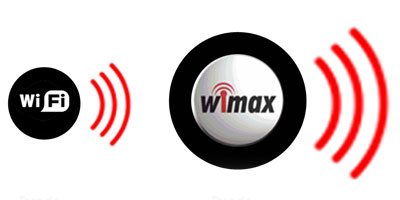 WiMax vs WiFi is a debate not easily understood by people. Internet service providers don’t help with confusing terms like, get “ABCD WiMAX” or get a “XYZ WiFi connection”. Let’s get some things into perspective. WiFi is not internet. Neither is WiMAX. WiFi, WiMAX or other connectivity protocols are networking mediums to eventually get to another network from where you get to some server or somebody else’s computer in case of hackers.
WiMax vs WiFi is a debate not easily understood by people. Internet service providers don’t help with confusing terms like, get “ABCD WiMAX” or get a “XYZ WiFi connection”. Let’s get some things into perspective. WiFi is not internet. Neither is WiMAX. WiFi, WiMAX or other connectivity protocols are networking mediums to eventually get to another network from where you get to some server or somebody else’s computer in case of hackers.
Wi-Fi at a glance
Wireless Fidelity, commonly known as Wi-Fi is defined under the IEEE 802.11x standards. WiMAX, on the other hand, stands for worldwide interoperability for microwave access. Defined under IEEE 802.16 standards, these protocols may work in the industrial, scientific and medical (ISM) bands or they might use a licensed frequency. Wi-Fi networks have a bandwidth of 20MHz, whereas WiMAX networks have a flexible bandwidth option which ranges from 1.25MHz to 20MHz.
Wi-Fi is a certification applied to products tested by the Wi-Fi Alliance, an industry consortium that promotes interoperability in heterogeneous WLANs. For example, all 802.11g products implement standard orthogonal frequency division multiplexing (OFDM) and direct sequence spread spectrum (DSSS), but only Wi-Fi certified products have proven that they correctly support a mandatory subset of features and options.
And here’s WiMax
WiMax is a certification tested by the WiMAX Forum. Carriers build and operate wide metropolitan area networks (WMANs) by purchasing licensed spectrum and then deploying WiMax base stations throughout a city, region, or other designated coverage area. To use WMAN, subscribers must purchase wireless services from a carrier.
WiMax Vs WiFi
The WiMax Vs Wi-Fi table below provides the differences at a glance between the two. Or three, since there are differences in various version as well.
| Features | WiMax (802.16a) | Wi-Fi (802.11b) | Wi-Fi (802.11a/g) |
| Primary Application |
Broadband Wireless Access |
Wireless LAN | Wireless LAN |
| Frequency Band | Licensed/Unlicensed 2 G to 11 GHz |
2.4 GHz ISM | 2.4 GHz ISM (g) 5 GHz U-NII (a) |
| Channel Bandwidth |
Adjustable 1.25 M to 20 MHz |
25 MHz | 20 MHz |
| Half/Full Duplex | Full | Half | Half |
| Radio Technology | OFDM (256-channels) |
Direct Sequence Spread Spectrum |
OFDM (64-channels) |
| Bandwidth Efficiency |
<=5 bps/Hz | <=0.44 bps/Hz | <=2.7 bps/Hz |
| Modulation | BPSK, QPSK, 16-, 64-, 256-QAM |
QPSK | BPSK, QPSK, 16-, 64-QAM |
| Forward error correction (FEC) | Convolutional Code Reed-Solomon |
None | Convolutional Code |
| Encryption | Mandatory- 3DES Optional- AES |
Optional- RC4 (AES in 802.11i) |
Optional- RC4 (AES in 802.11i) |
| Mobility | Mobile WiMax (802.16e) |
In development | In development |
| Mesh | Yes | Vendor Proprietary | Vendor Proprietary |
| Access Protocol | Request/Grant | CSMA/CA | CSMA/CA |
What is WiMax exactly?









Hi
Hi, how can I help you?